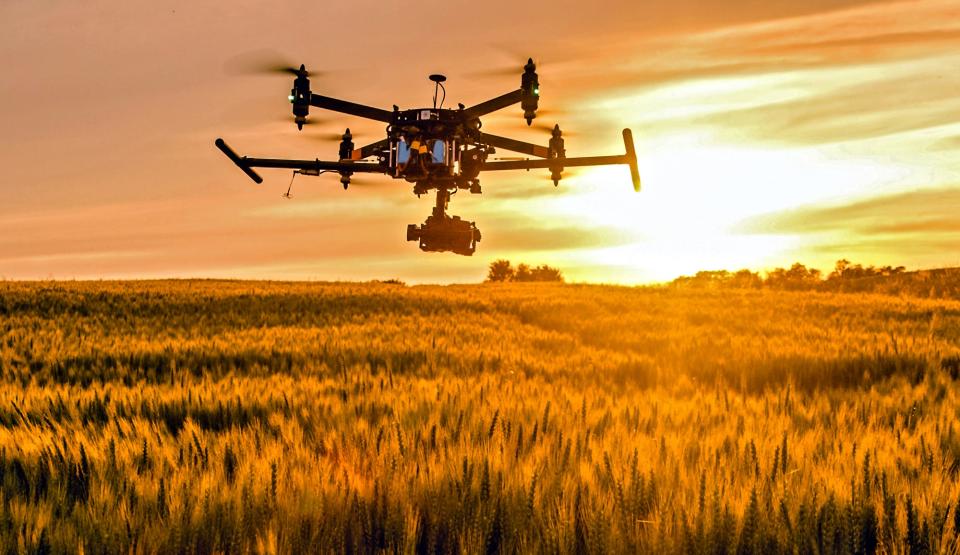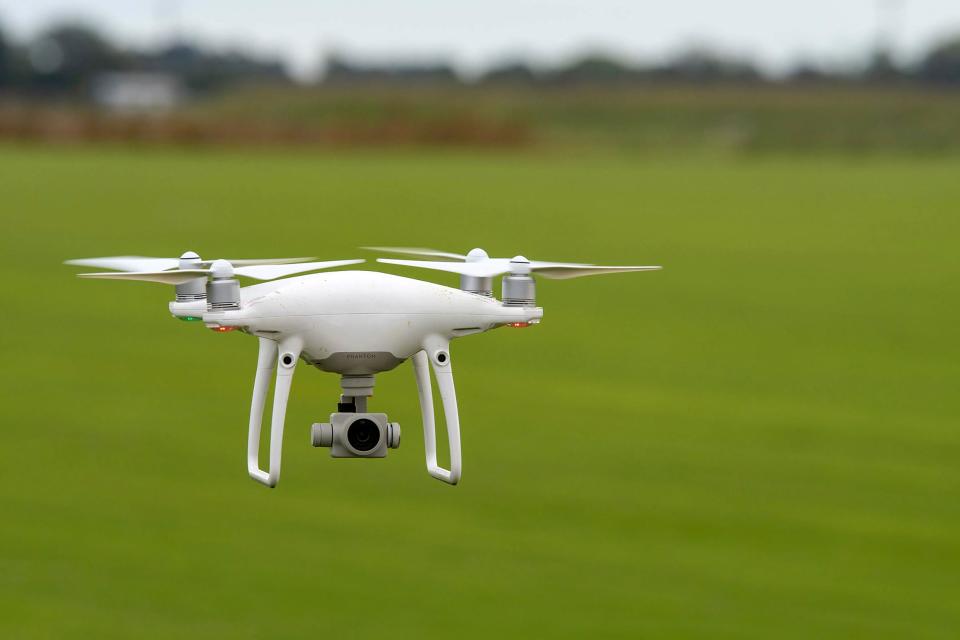Why most farmers could be flying drones in a decade, and how it'll affect Oklahoma crops

Purple deadnettle, henbit, smut, aphids and other weeds, diseases and insects that torment wheat crops and vex farmers might not stand a chance when drones fly, and in a decade or so they could be flying over farms all over.
That's one Oklahoma scientist's take on research into the use of drones in agriculture that recently netted national recognition for scientists at Oklahoma State and other universities.
In 10 or 15 years, drones will be as common on farms as tractors, said Randy Raper, assistant director of Oklahoma State University Ag Research and administrative adviser on the project. Drone-flying farmers themselves or contracted farm drone operators will be flying them, he said.
Raper said drones can do things that a satellite can't, as impressive as space-based crop surveillance is: Drones, also called unmanned aircraft systems, can put even more precision into precision agriculture. That's the use of advanced technology in everything from controlling crop pests to gauging fertilizer needs to monitoring moisture.
Bastion of rodeo tradition:Lazy E Arena in Guthrie nears 4 decades as an Oklahoma landmark
It will probably mostly be service providers, not farmers themselves, who fly drones over farms, said Brady Sidwell, principal of Sidwell Strategies in Enid. The commodity brokerage also runs grain, transportation, distribution, crop insurance and seed companies, a brewery — and Ninja Ag, which could benefit from the usage of imagery collected by drones.
Drones can supplement satellite imagery for use in crop management
Ninja Ag now uses satellite imagery and NDVI — for Normalized Difference Vegetation Index — to produce customized fertilizer recommendations. NDVI measures levels of vegetation in a field, a crop's greenness, as part of determining a crop's fertilizer needs.
But a drone can provide more detailed remote imagery, Sidwell said.
More important, he said, is the timing of data processing: Drones can provide images for processing immediately for farmers to make crop management decisions "in real time." Drones also can be used to quickly assess weather-related crop damage for insurance purposes, he said.
"What we do with the data, that's where the main obstacle is to the adoption of drones," Sidwell said.
He said drones also can be used for lower-tech reasons, for example, to check pond levels during dry times or to keep up with livestock or hunt for strays.
With a drone, a cattle raiser could count cows from a recliner
Getting farmers to adapt drone use and related tech is another thing. A cattle raiser, Sidwell said, might "rather go out and check his cows than use a drone."
Growers' reluctance to adopt higher technologies is common enough that it's addressed in a Ninja Ag blog post.
"Getting growers onboard with new technologies can be a challenge. We all know a grower that’s hesitant or even resistant to new technology and change," the company says. "We get it. With the continuous launch and letdown of new companies and technologies, it can get old quick.
"However, with an ever-changing technological landscape, not adapting to change isn’t an option — especially when it comes to optimizing return on investment. Technological advancement leads to new and improved products and services for businesses that embrace new technology, while those that resist technological change risk being left behind or eventually pulled into it."
'Doing good things.' OKC Zoo leader earns honor for being champion of animal welfare
It took a village of ag scientists to do award-winning drone research
The collaboration on drone research among OSU and universities earned the 2022 National Excellence in Multi-state Research Award from the Southern Association of Agricultural Experiment Station Directors.
New drone-based strategies are already used in agriculture, said Raper, an OSU professor of biosystems and agriculture engineering. It's taken multistate collaboration among scientists, from Florida to Washington state and from Mississippi to New Jersey, because drone research is so complex and costs so much, he said.

OSU outlined some of the research in a recent report. Drones were:
Developed to scout for pests and apply targeted treatment in fruit, nut and row crops.
Used in systems to monitor plant water stress and to help manage livestock by assessing pasture forage quality.
Used to experiment with locating strays from herds.
Used to create 3-D renderings of animals to calculate market value.
Used to evaluate plant gene response to stressors such as weather, insects and weeds and to identify appropriate plants for crop breeding programs, which OSU said is "critically important as the climate changes and pests adapt to current control methods."
“This project has identified reliable, cost-effective and user-friendly drone platforms and sensors for monitoring and managing stressors in agriculture and natural resources,” Raper said.
Research during the five-year collaboration will go a long way toward making drone use in farming widespread, he said. It's been held back by expense, regulations, and limited research and education.
Airbnb's top new Oklahoma host:His property can be found in a pasture
Other research looked at:
How drones can detect pests and disease before yield loss makes a crop unprofitable.
Integrating weather with crop data to develop predictive models for making crop production management decisions and maximizing resources.
Targeting farming practices that contribute to surface water issues surrounding chemical use and "off-target" effects.

The research led to the creation of workshops for drone operators, as well as printed and digital resources. Researchers have produced more than 100 peer-reviewed publications, according to OSU.
“Over the years, this group’s multistate, multidisciplinary research and outreach have helped overcome barriers and accelerate broader use of drones in agriculture and natural resources,” Raper said. “By efficiently collecting large amounts of data, drone use can result in better decision making, greater advances in plant and animal breeding, and more profitable and sustainable management.”
Senior Business Writer Richard Mize has covered housing, construction, commercial real estate and related topics for the newspaper and Oklahoman.com since 1999. Contact him at rmize@oklahoman.com. Sign up for his weekly newsletter, Real Estate with Richard Mize.
This article originally appeared on Oklahoman: Flying drones to be common in agriculture, OSU, other researchers say
